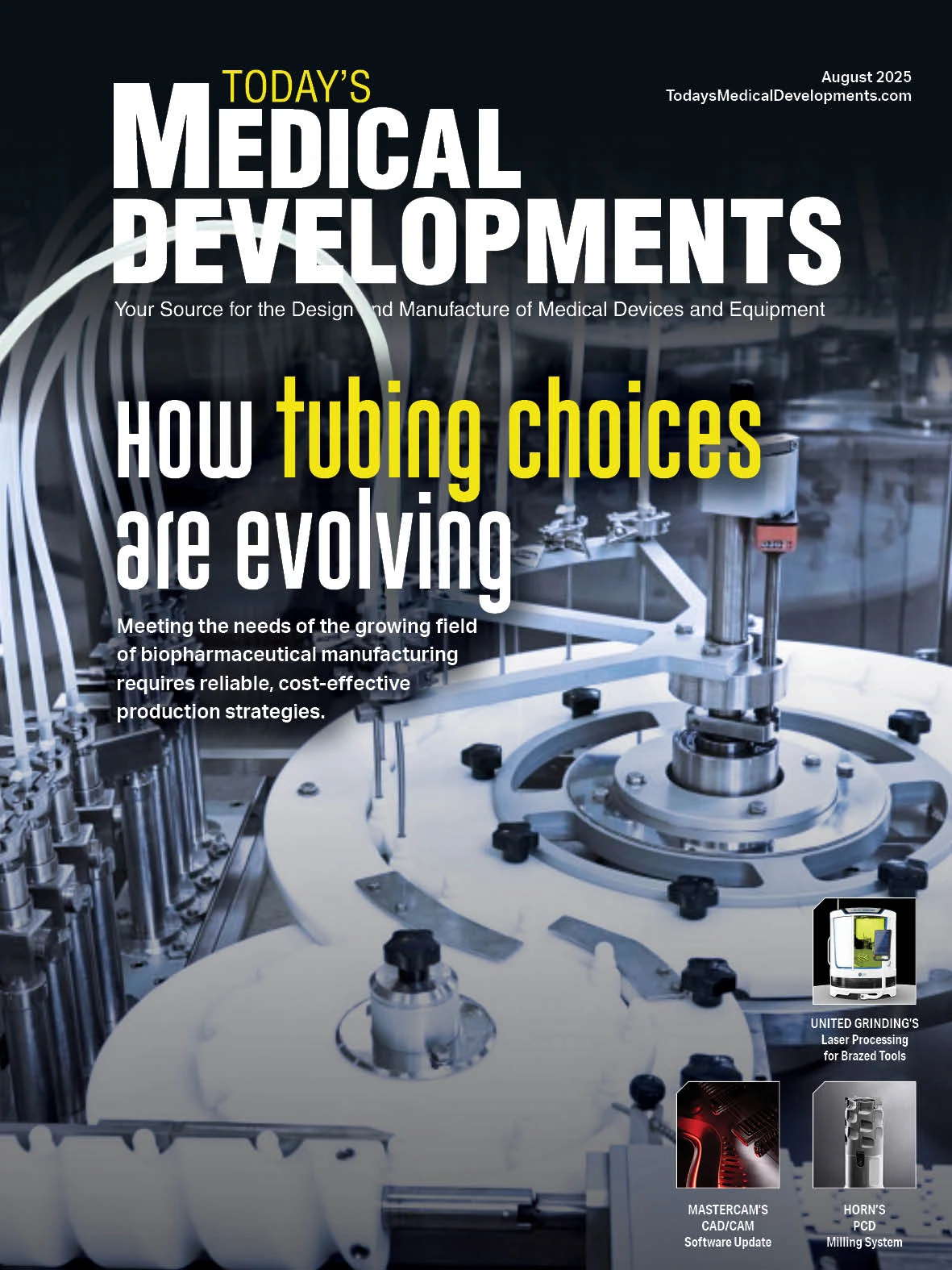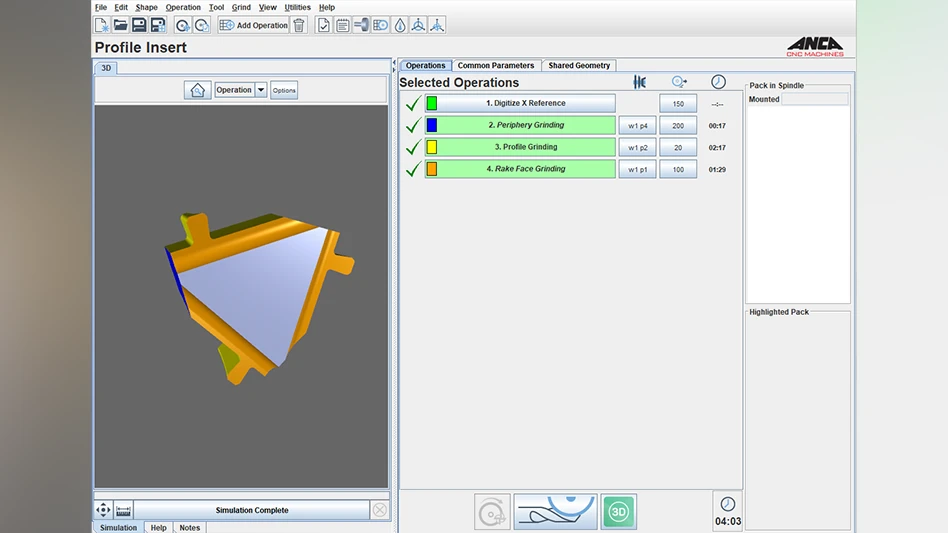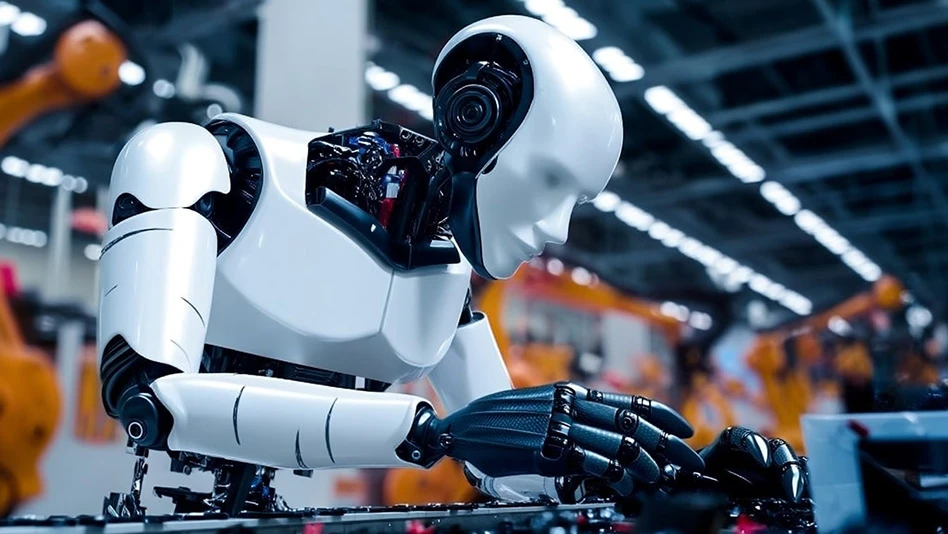
Editor's Note: This article originally appeared in the August 2025 print edition of Today's Medical Developments under the headline “3D-printed bioinspired structures”.
When 3D printing was first introduced in 1985, it marked a major turning point for the manufacturing industry. In addition to being less expensive than traditional manufacturing technologies, it also promised the ability to customize designs and make prototypes on demand.
Yet, Associate Professor Pablo Valdivia y Alvarado from the Singapore University of Technology and Design (SUTD) believes there are still ways to go before 3D printing can achieve its full potential. In traditional 3D printing, a nozzle is used to print the material layer by layer, and the path the nozzle takes is known as the toolpath.
However, layer-by-layer printing is incompatible for use with slow-curing materials that take more time to harden such as silicone, epoxies, and urethanes. These types of materials are often used to create soft mechanical metamaterials used for lightweight, nature-inspired structures, such as lattices and web structures. Deposition-based processes in 3D printing, such as direct ink writing, would be able to work with these materials to create such structures, but these suffer from non-optimized toolpaths.
“These issues lead to extended print times and are further exacerbated by the dynamic material behaviors in their uncured state,” Valdivia y Alvarado explains. It therefore remains challenging to 3D print complex bioinspired structures.
To tackle this challenge, Valdivia y Alvarado and his team at SUTD proposed an architected design approach.
Looking specifically at how direct ink writing can be used to fabricate lightweight structures, the team first designed a method to optimize the toolpaths. By breaking down the object’s 3D design into points and simple shapes, the team could make use of segmented and continuous toolpath designs to improve the overall toolpath. Through this, the team generated toolpaths containing fewer unnecessary starts and stops.
To test the approach, the team printed several types of bioinspired structures. They first sought to tune the properties of the printing materials to further enhance their suitability for direct ink writing. By selecting three commercially available silicone materials, then adding a modifier known as Thivex, the team created and characterized nine distinct material combinations more suitable for direct ink writing.
The researchers then proceeded to 3D print cilia, webs, leaf-like structures, and lattices, and tested the functionalities of the structures in different settings. Adding the 3D-printed cilia to suction cups improved the suction cups’ pull-off force; meanwhile, the 3D-printed lattice proved to be an effective energy-absorbing structure, demonstrating a reduction of maximum impact peak forces up to 85%.
“Although the approach is still in the research phase, its potential for customized, high-performance designs makes it highly relevant for industries focused on robotics, wearable technologies, and advanced metamaterials,” Valdivia y Alvarado says.
He also explained deposition-based additive manufacturing (AM) processes could find a niche in advanced applications, complementing traditional methods essential for producing high-volume and standardized structures.
For now, the team is focused on improving the scaling efficiency of their method, reducing its costs, and expanding the versatility of the materials to industrial settings. They plan to explore multi-material printing which would allow different materials to be printed, creating what the team has coined “engineered metamaterials.” In addition, the team will also be investigating how machine learning techniques can enable 3D printing users to specify performance metrics for the metamaterial designs they wish to generate.
“These advancements will further unlock the potential of 3D-printed metamaterials for a wide range of applications, including soft robotics and wearable protective gear,” Valdivia y Alvarado says.
Singapore University of Technology and Design
https://www.sutd.edu.sg

Explore the August 2025 Issue
Check out more from this issue and find your next story to read.
Latest from Today's Medical Developments
- Arcline to sell Medical Manufacturing Technologies to Perimeter Solutions
- Decline in German machine tool orders bottoming out
- Analysis, trends, and forecasts for the future of additive manufacturing
- BlueForge Alliance Webinar Series Part III: Integrate Nationally, Catalyze Locally
- Robot orders accelerate in Q3
- Pro Shrink TubeChiller makes shrink-fit tool holding safer, easier
- Revolutionizing biocompatibility: The role of amnion in next-generation medical devices
- #56 Lunch + Learn Podcast with Techman Robot + AMET Inc.





